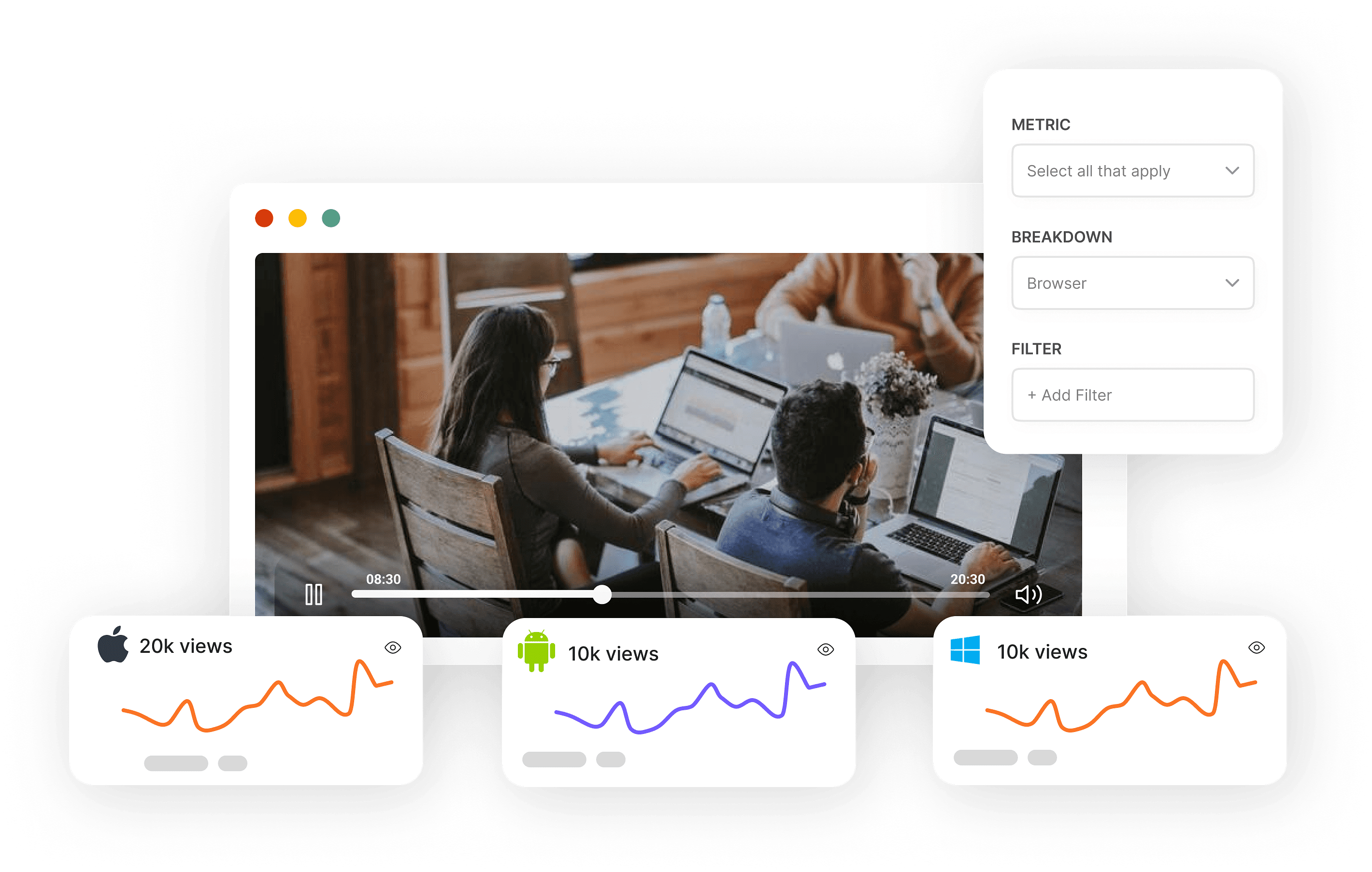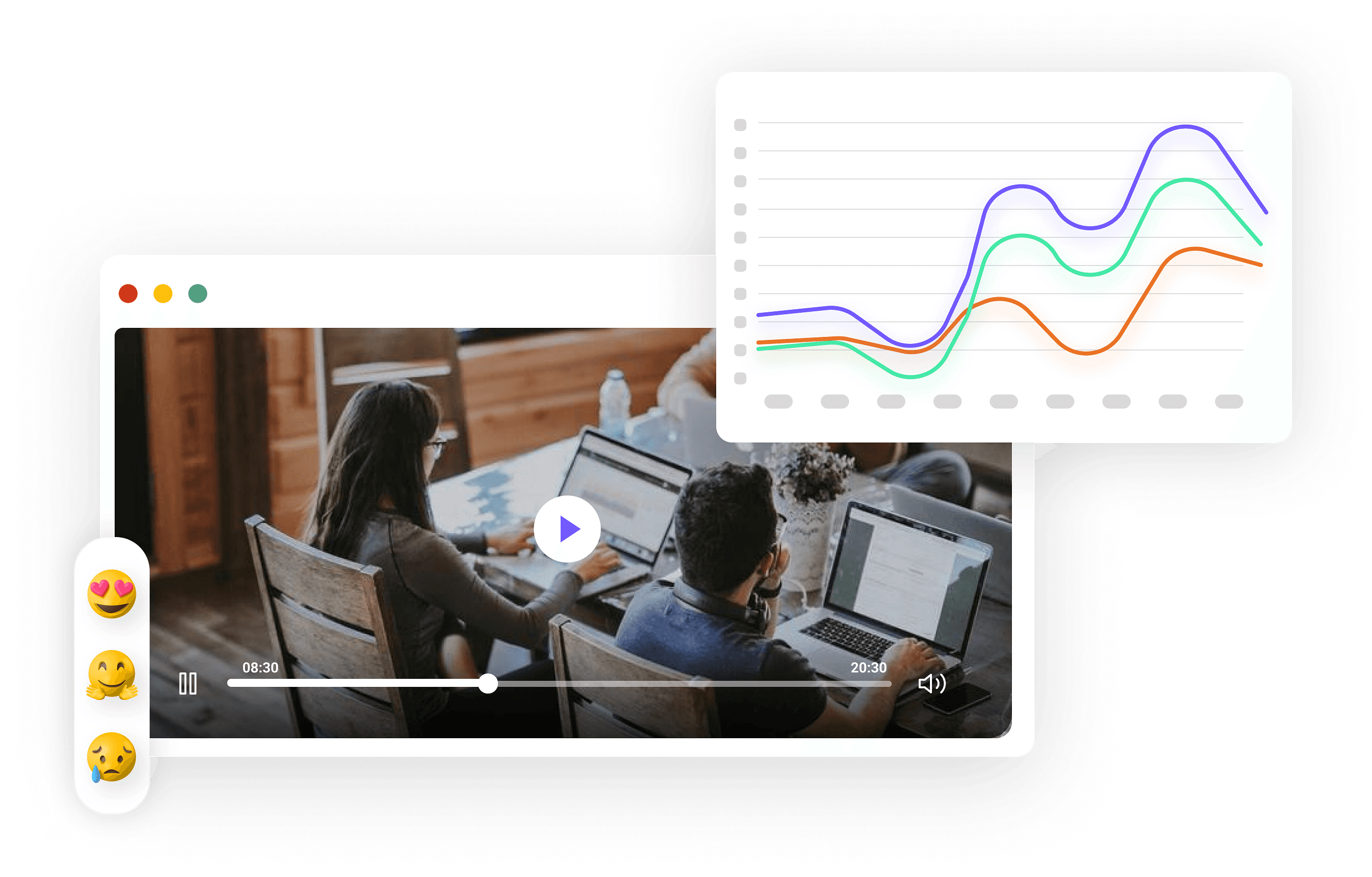Reduce buffering and start times by tracking latency metrics
Every added second to load a video lowers your brand perception for the end-user. Optimize latency metrics for uninterrupted streaming with every view.
What is video latency?
Video latency is measured as the delay between the time a video stream is requested by the viewer and the time the video stream is initiated. Networks that deliver significantly lower delays are termed low-latency networks. Optimizing for negligible delays and low latency streaming leads to better audience retention and improved end-user experience.
Player start-up time
The time a video player takes to initialize and be ready for inputs from the viewer to start video playback is tracked as the player start-up time.
Nothing is more off-putting than a gray box loading on a webpage without video playback. Longer player start-up time invariably leads to a drop in audience retention. By tracking this metric, you can:

Video start up time
The time a player takes when a viewer clicks the play button for the first time to the time the first frame of the video is shown to a viewer is tracked as video start-up time.
Viewers start abandoning videos if it takes more than two seconds to start. Tracking video start-up time helps optimize and retain viewers.

Seek latency
The total time spent waiting for playback to resume after the viewer seeks a new location on the video is measured as seek latency.
A single buffer event can lead to a 39% drop in viewers. Optimizing for seek latency is crucial to delivering a better video experience for your end-user. Track seek latency to:

Track and eliminate latency edge cases with Gumlet analytics and deliver buffer free videos with every view.
GUMLET IS TRUSTED BY





Learn more about other features
Engagement metrics
Measure and track latency metrics to eliminate all edge cases and make every view on your videos remarkable.
How it works
Read our documentation to understand how Gumlet Insights works and how you get started without APIs.
Analytics SDKs
Check out our documentation on Gumlet analytics SDKs. Seamlessly capture, transfer and archive your data.
Gumlet analytics is free for all
Create an account, set up your analytics dashboard, and monitor your video performance without API integrations. Or, contact us to identify how our analytics fits your existing stack.